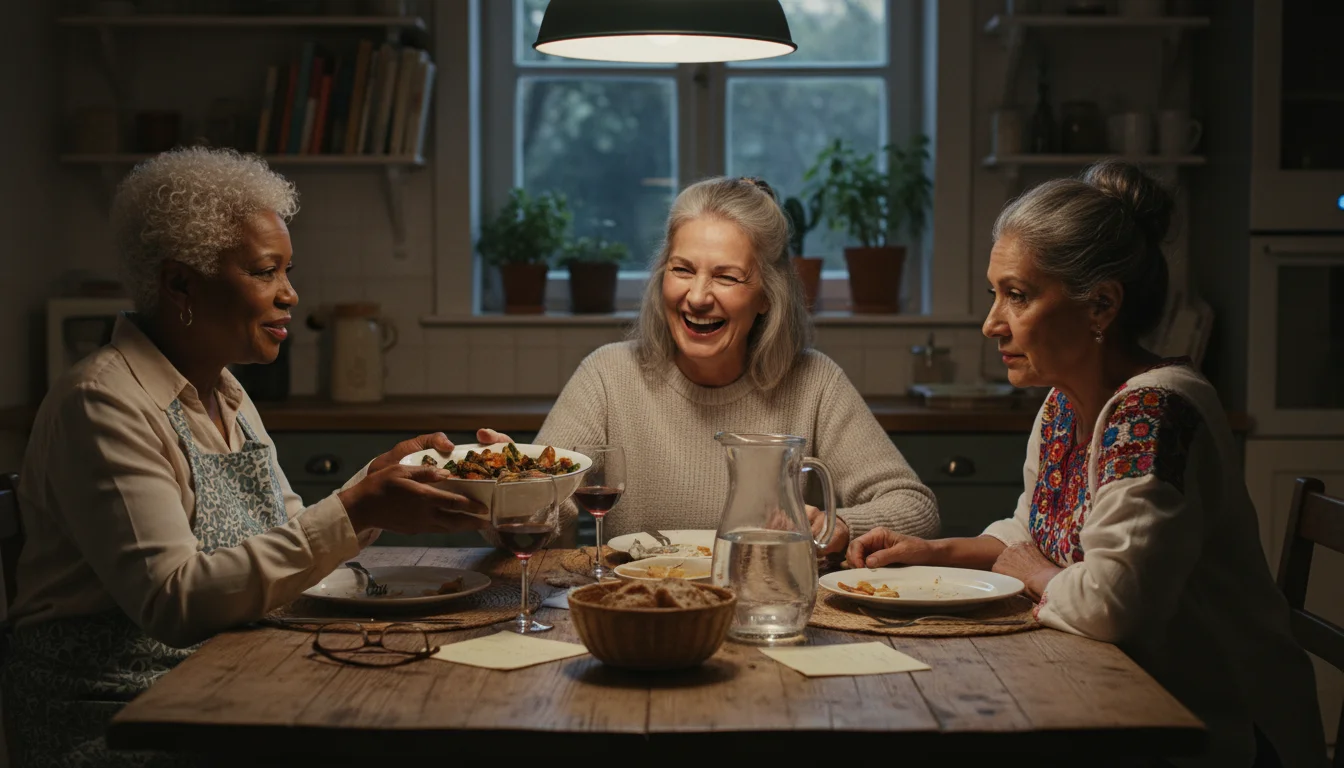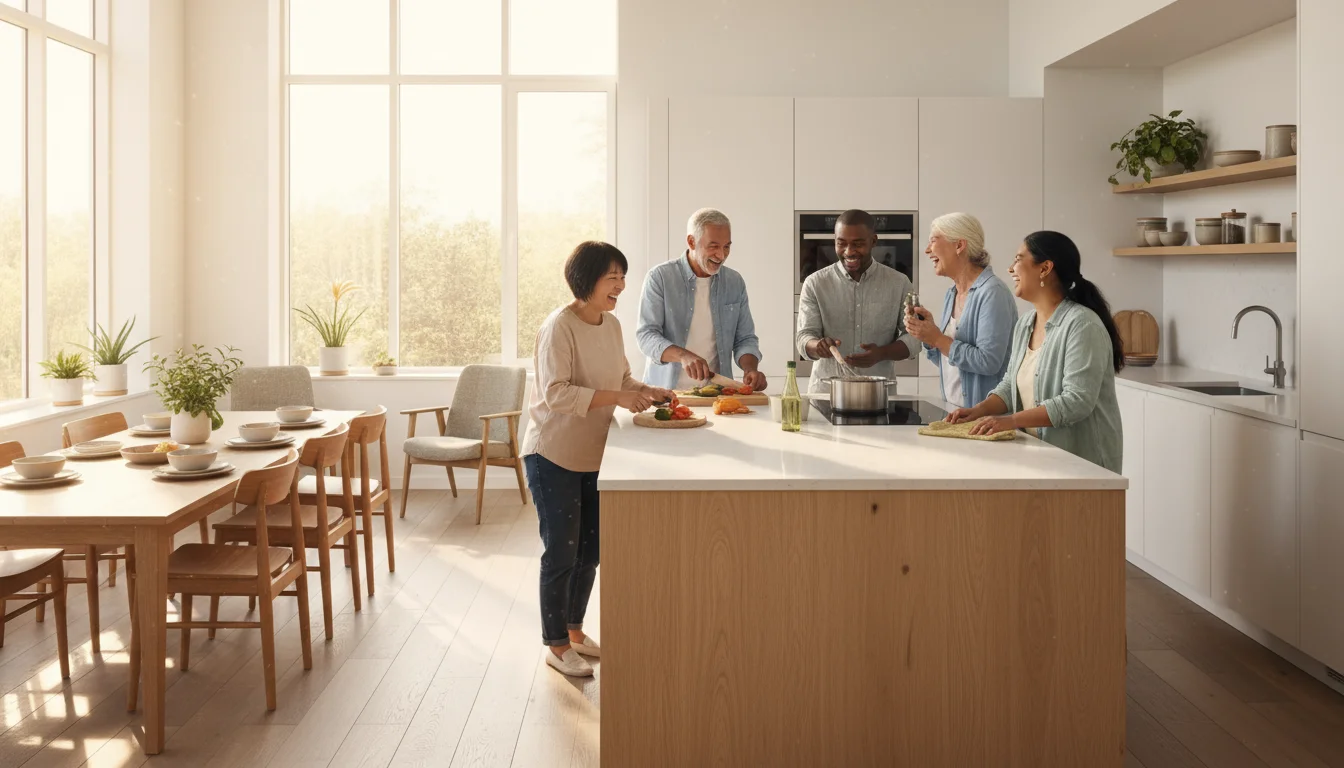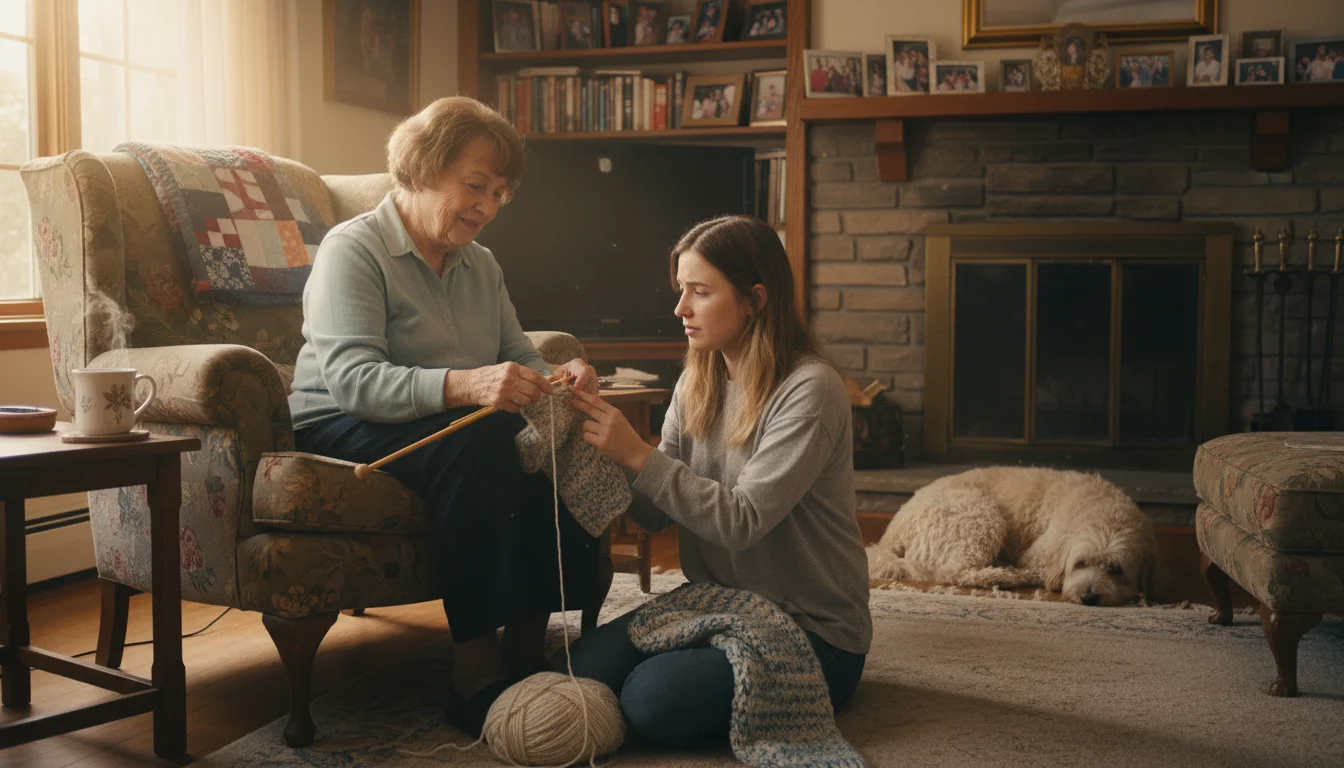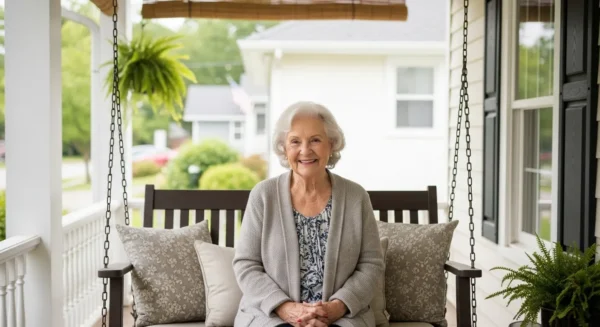

Introduction: Embracing a New Chapter in Your Retirement Journey
When you pictured retirement, what did you see? For many of us, the dream involved settling into the family home for good, perhaps downsizing to a quiet condo, or maybe even moving to a sunny 55-plus community. These are wonderful, valid paths that have defined the retirement experience for generations. But as we live longer, more active lives, our needs and desires for this chapter are evolving. We’re seeking more than just a place to live; we’re searching for community, purpose, and genuine connection.
What if the home you’ve known for decades now feels a little too quiet? What if the idea of maintaining a large property on your own seems more daunting than delightful? Loneliness can be a silent challenge in our later years, and the traditional models of senior living don’t always address this fundamental human need for daily, spontaneous interaction. This is where a powerful and growing movement comes into play: retirement co-living.
It’s a concept that might sound modern, even youthful, but its roots are as old as time—people choosing to live together for mutual support, companionship, and shared resources. Far from being a step backward, co-living is emerging as one of the most forward-thinking senior housing trends. It’s a deliberate choice to design a retirement lifestyle rich with social engagement and shared experiences. It’s about trading isolation for community, and high costs for shared expenses. So, let’s explore this exciting option. Could shared living be the key to a more vibrant, connected, and affordable future for you?

Finding Your Path: Exploring the Many Forms of Co-Living
The term “co-living” might conjure images of college dorms, but for seniors, it has been reimagined in sophisticated and practical ways. There isn’t a single one-size-fits-all model. Instead, it’s a flexible concept that you can adapt to fit your personality, budget, and social preferences. Understanding the different forms is the first step in seeing if this lifestyle is right for you.

The “Golden Girls” Model: Informal Friend-Based Living
This is perhaps the most familiar and accessible form of co-living. You’ve likely seen it on television, but it’s a reality for a growing number of seniors across the country. It involves a small group of friends, often with a shared history, deciding to pool their resources to rent or buy a home together. Each person has their own private bedroom, and sometimes a private bathroom, while sharing the kitchen, living room, and other common spaces.
The Appeal: You’re living with people you already know, trust, and enjoy. There’s a built-in comfort and familiarity from day one. It’s a wonderful way to combat loneliness, share the burdens of household chores and bills, and have a support system right under your roof. Imagine nightly dinners together, shared morning coffees, and someone always being there to help in an emergency or simply to chat with on a quiet afternoon.
Things to Consider: Even with the best of friends, it’s crucial to treat this as a serious arrangement. You’ll need open conversations and a formal legal agreement covering finances, chores, guest policies, and what happens if someone decides to move out.

Purpose-Built Senior Co-Living Communities
Moving beyond informal arrangements, a new market of professionally managed co-living spaces is emerging, designed specifically with older adults in mind. These communities are intentionally created to foster interaction and ease the burdens of homeownership. Think of them as a hybrid between an apartment complex and a shared home.
The Appeal: These communities offer the best of both worlds: the privacy of your own fully-equipped apartment or suite, combined with extensive, beautifully designed common areas. These might include large communal kitchens for group cooking, movie rooms, fitness centers, art studios, and lush gardens. Often, a community manager organizes events, outings, and classes, taking the guesswork out of building a social life. All the maintenance, from a leaky faucet to mowing the lawn, is handled for you.
Things to Consider: These communities often come with a monthly fee that covers rent, utilities, and amenities, so it’s important to understand the full cost. You’ll also be living with a new group of people, which requires an open mind and a willingness to engage.

Intergenerational Co-Living: Bridging the Generational Gap
One of the most exciting senior housing trends is intergenerational living. In this model, older adults share a home or community with younger people, such as university students, young professionals, or even families. The arrangements can vary, from a senior renting a spare room to a student in exchange for help with errands, to larger, purpose-built communities that house people of all ages.
The Appeal: The benefits are profound and flow in both directions. Seniors gain a sense of vitality, a connection to new ideas and technology, and a chance to mentor and share their life experiences. Younger residents often benefit from more affordable rent, the stability of an older housemate, and the wisdom and guidance they can offer. It’s a powerful antidote to age-based segregation and fosters a true sense of community.
Things to Consider: Lifestyle differences are the biggest hurdle. A successful intergenerational home requires clear communication and mutual respect regarding noise levels, schedules, and social habits. Finding the right match is key.

Niche and Affinity-Based Communities
As co-living evolves, some communities are forming around shared interests or identities. Imagine a home for retired musicians with a shared recording studio, a community for avid gardeners with extensive communal plots, or a co-op for lifelong artists with a shared gallery space. These niche communities offer an immediate and deep level of connection based on a shared passion.
The Appeal: You are surrounded by people who “get” your passions. It provides a built-in structure for pursuing your hobbies and continuing to grow in your retirement. It ensures that your social life is woven into the very fabric of your living situation.
Things to Consider: These communities can be harder to find and may have a more involved application process to ensure a good fit for everyone.

Tips for Getting Started and Making Connections
The idea of co-living can feel both exciting and overwhelming. How do you go from curiosity to reality? It’s a process that requires introspection, research, and open communication. Here are some practical steps to guide you on your journey.

Step 1: Reflect on Your Wants and Needs
Before you even begin your search, take some time for honest self-assessment. This isn’t just about finding a place; it’s about designing your ideal retirement lifestyle. Grab a notebook and consider these questions:
- Privacy vs. Socialization: How much alone time do you truly need? Are you an extrovert who thrives on constant interaction, or an introvert who needs to recharge in solitude? Be realistic about your social battery.
- Deal-Breakers and Must-Haves: What are your non-negotiables? A private bathroom? A pet-friendly home? A location close to family or specific amenities? What are you willing to compromise on?
- Financial Picture: What is your realistic monthly budget for housing, utilities, and shared expenses? Being clear about this from the start will prevent future conflicts.
- Contribution: What do you bring to a shared home? Are you a great cook, a skilled gardener, a savvy financial planner, or simply a wonderful listener? Thinking about your role can help you find a group where you’ll fit in perfectly.

Step 2: Start the Search
Once you know what you’re looking for, it’s time to find potential opportunities. Cast a wide net:
- Talk to Your Network: Start with the people you already know. Mention your interest to friends, former colleagues, and members of your social clubs. You might be surprised to find others who have been thinking along the same lines.
- Explore Online Platforms: There are websites specifically designed to match older adults seeking shared housing. Search for “senior roommate finders” or “senior home sharing” to see what services are popular in your area.
- Contact Local Senior Centers: Your local senior center or Area Agency on Aging is a fantastic resource. They may have bulletin boards, newsletters, or even formal programs dedicated to home sharing.
- Research Managed Communities: If you’re interested in a more formal, purpose-built community, search online for “senior co-living” or “intergenerational housing” in your desired city or state.

Step 3: The “Interview” Process is a Two-Way Street
Whether you’re meeting a potential roommate or touring a community, treat it like an interview where you are both the interviewer and the interviewee. The goal is to determine compatibility. Don’t be shy about asking detailed questions:
- Daily Routines: Are they an early bird or a night owl? How do they feel about background noise like a television?
- Cleanliness: Discuss expectations for cleaning common areas. “Clean” can mean very different things to different people!
- Guests and Socializing: What are the policies on overnight guests? How often do they plan to entertain?
- Conflict Resolution: Ask directly: “How do you handle disagreements?” A willingness to talk things out calmly is one of the most important traits in a housemate.

Step 4: Put It in Writing
This is the most critical step, especially for informal arrangements with friends. Do not rely on verbal agreements. A formal cohabitation or home-sharing agreement is your best tool for preventing misunderstandings. This legal document should be drafted with the help of a lawyer and should clearly outline:
- Financial Responsibilities: Who pays what, when, and how. This includes rent/mortgage, utilities, groceries, and shared maintenance costs.
- Use of Space: Clarify which spaces are private and which are communal.
- House Rules: Detail everything you discussed, from chores to guest policies to noise levels.
- Exit Strategy: Define the process for what happens when someone wants or needs to move out, including the notice period and financial obligations.

Stories from the Co-Living Community
Sometimes, the best way to understand a new concept is through the stories of those who have already taken the leap. While every journey is unique, these experiences highlight the profound impact that choosing a shared lifestyle can have.
Consider Margaret, a 72-year-old widow. After her husband passed, the four-bedroom house where they raised their children felt cavernously empty. The silence was deafening, and the upkeep was becoming a physical and financial strain. She mentioned her feelings to two friends from her weekly bridge game, both also living alone. An idea sparked. After months of planning, they sold their respective homes and pooled their resources to buy a large, single-level townhouse. Today, Margaret says she hasn’t felt this vibrant in years. They share cooking duties, watch movies together in the evening, and look out for one another. When one had a minor health scare, the other two were right there to help. It’s not just a house; it’s a support system and a home filled with laughter again.
Then there’s Robert, a 68-year-old retired teacher who went through a divorce just before retirement. The prospect of living alone for the first time in 40 years was daunting. He wasn’t interested in a traditional 55+ community, which he felt lacked energy. He discovered a purpose-built intergenerational co-living building in a nearby city. He moved into a small, private apartment and quickly became the community’s unofficial grandfather. He tutors a college student who lives down the hall in exchange for tech support with his new smartphone. He shares stories with a young couple expecting their first child. Robert found that his life experience was not just valued, but needed. He didn’t just find a place to live; he found a new sense of purpose.
These stories underscore a common theme. The move to co-living is rarely just about saving money. It’s a proactive step toward a richer, more connected life. It’s about intentionally building a “chosen family” to navigate the joys and challenges of aging together.

Resources to Help You Explore Your Interests
Embarking on this new path requires good information and community connections. Fortunately, there are many excellent organizations ready to help you explore your options and find the right fit for your lifestyle. Whether you’re looking for general advice or specific opportunities, these resources are a great place to start.
For lifestyle and community resources, AARP offers extensive articles and local chapters. They often cover emerging senior housing trends and can connect you with information and events in your area, providing a broad overview of what’s possible in your retirement years.
Many people find that co-living frees up time and resources, allowing them to engage more deeply with their communities. If you’re looking for ways to stay active and purposeful, new opportunities to give back can be found via AmeriCorps Seniors. Their programs connect volunteers with meaningful service projects, a perfect activity to share with new housemates.
Shared interests can be the glue that holds a co-living household together, and a love for the outdoors is a common one. Comprehensive travel and recreation information for seniors is available at the National Park Service. Planning a group trip to a national park with your new housemates can be a wonderful bonding experience. For local programs, check your city or county’s Parks and Recreation department website for classes, clubs, and events that you can enjoy together.
Finally, don’t underestimate the power of local connections. Your town’s senior center, public library, and community religious organizations are often hubs of information about local housing initiatives and social groups that can support your journey.

Frequently Asked Questions
What happens if I don’t get along with my housemates?
This is a common and valid concern. The best way to handle this is proactively. A detailed, legally reviewed cohabitation agreement is essential. It should include a conflict resolution clause, outlining steps to take during a disagreement (e.g., a house meeting, mediation). Crucially, it must also have a clear exit clause that defines the notice period and financial responsibilities if someone decides the arrangement isn’t working and needs to move out. This turns a potentially emotional situation into a manageable, step-by-step process.
How are finances typically handled in a shared home?
There are several effective methods. Many households open a joint bank account specifically for shared expenses like utilities, internet, and groceries, with each person contributing a set amount each month. For larger, fixed costs like rent or a mortgage, payments are usually made directly by each individual. Transparency is key. All financial arrangements should be clearly documented in your cohabitation agreement to avoid any confusion or resentment down the line.
Isn’t co-living just for people who can’t afford to live alone?
While the financial benefits are a significant advantage, it’s a misconception that cost is the only driver. Many financially secure seniors choose co-living for the social and emotional benefits. The primary motivation is often the desire for community, mutual support, and an active, engaged lifestyle. It is a choice to trade isolation for companionship. The cost savings are a wonderful bonus that can free up funds for travel, hobbies, and other life-enriching experiences.
I really value my privacy. Will I have to give that up?
Not at all. A core principle of successful adult co-living is the balance between private and communal space. In virtually all models, you will have your own private bedroom, and often a private bathroom. This is your personal sanctuary. The “co-living” aspect applies to shared common areas like the kitchen and living room. Establishing clear boundaries and respecting each other’s need for solitude is a key part of the social contract and should be discussed openly before moving in together.
How do I find reputable co-living communities or trustworthy roommates?
Start with trusted sources. Organizations like your local Area Agency on Aging or senior center can often provide referrals to vetted home-sharing programs. When looking for individuals, leverage your existing social network first—friends of friends are often a good starting point. If you use online matching services, choose ones specifically geared toward seniors, read reviews carefully, and always conduct thorough interviews and background checks. For formal communities, look for established companies with a good track record and positive resident testimonials.
Disclaimer: The advice in this article is based on general experience and is for informational purposes. Please research local opportunities and consult with relevant experts before making significant lifestyle changes or purchases.
Ultimately, retirement co-living is more than just a housing solution—it’s a lifestyle philosophy. It’s an intentional choice to build a life centered on connection, shared joy, and mutual support. It may not be the right path for everyone, but for a growing number of us, it represents a vibrant, practical, and deeply fulfilling future. It’s about creating a home where you not only live, but truly thrive.
For expert guidance on senior health and finance, visit AARP, Alzheimer’s Association, American Heart Association, Benefits.gov and National Institute on Aging (NIA).
|
Fact-Checked Content
Our editorial team reviews all content for accuracy and updates it regularly. Learn about our editorial process →
|

















